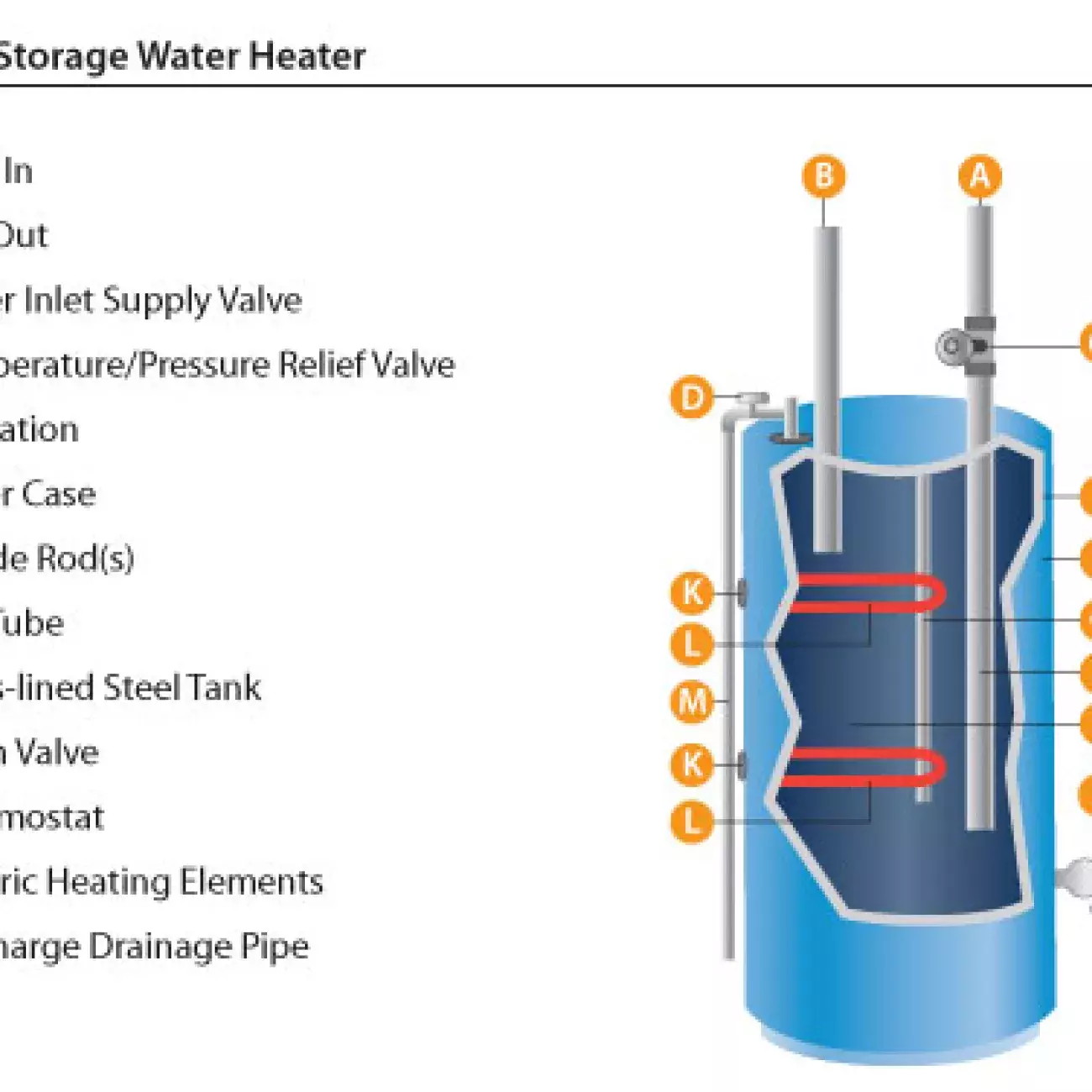Storage Water Heaters
Storage water heaters are the most common type of water heating system in homes today. A storage water heater installed in a single-family home can hold and provide 20 gallons to 80 gallons of hot water around the clock.
When hot water is needed in the home for activities such as bathing, laundry or dishwashing, water is released from the top of the tank when you turn on the hot water tap. As hot water is released, cold water enters the bottom of the tank to keep the tank full. To keep hot water constantly available to the home, water is continuously heated in the tank even when a hot water tap isn't running. This results in standby heat loss. Some storage water heater models have heavily insulated tanks that can reduce heat losses and reduce the demand for fuel to heat the water. Insulation between the storage tank and the outer jacket slows this heat loss, but cannot eliminate it entirely.
Fuel Sources
Storage water heater fuel sources include natural gas, propane, fuel oil and electricity. Natural gas and propane water heaters basically operate the same. A gas burner under the tank heats the water. A thermostat opens the gas valve as the water temperature falls. The valve closes when the temperature rises to the thermostat's setpoint. Oil-fired water heaters operate similarly, but they have power burners that mix oil and air in a vaporizing mist, ignited by an electric spark.

Electric water heaters have one or two electric elements, each with its own thermostat. With two electric elements, a standby element at the bottom of the tank maintains the minimum thermostat setting while the upper demand element provides hot water recovery when demand heightens.

Gas and oil water heaters can lose heat when the emissions from the combustion process are vented outdoors. Fan-assisted gas water heater and an atmospheric sealed-combustion water heater have mechanisms that can reduce these losses. The fan-assisted gas water heater uses a draft-induced fan that regulates the air that passes through the burner, which minimizes the amount of excess air during combustion, increasing efficiency. The atmospheric sealed-combustion water heater uses a combustion and venting system that is totally sealed from the house.